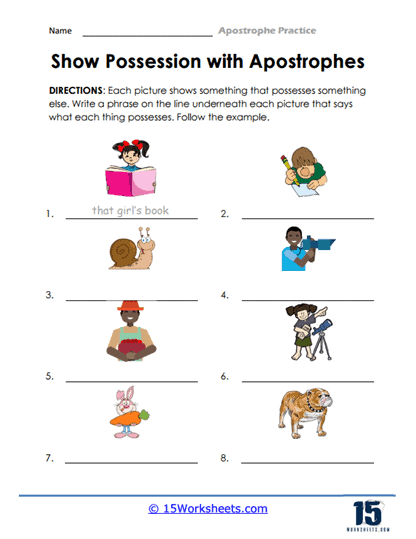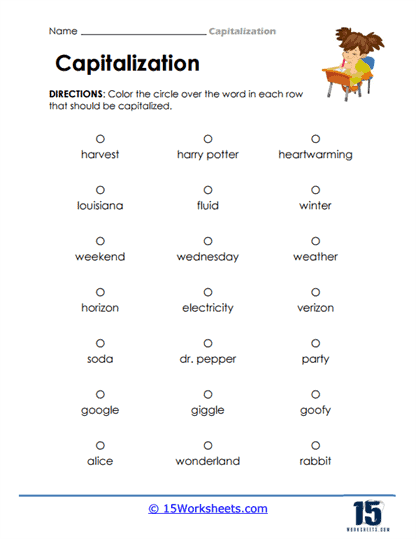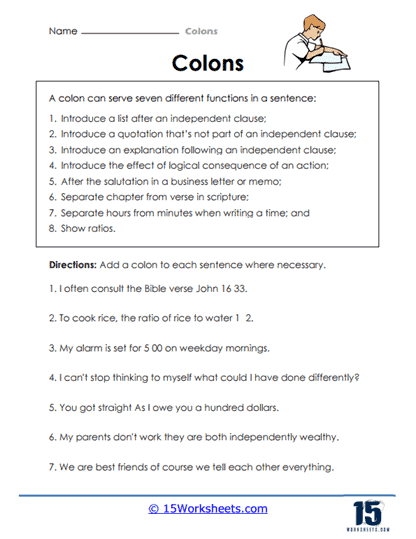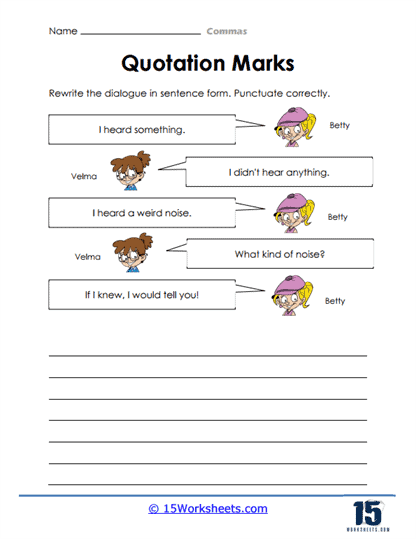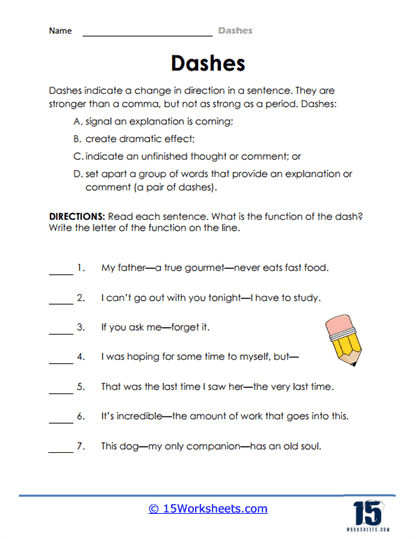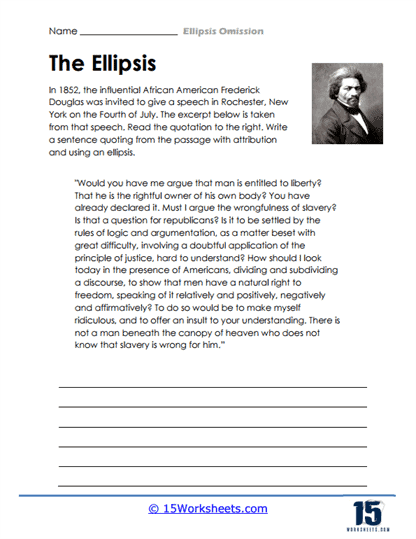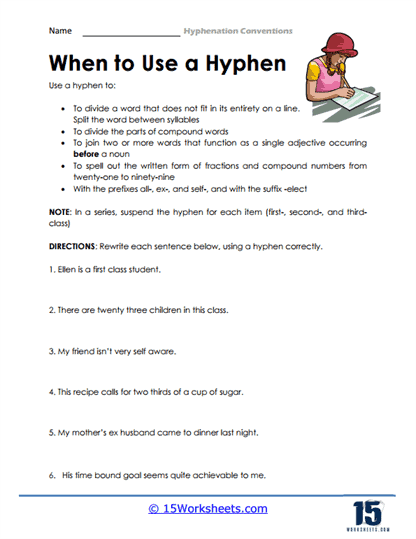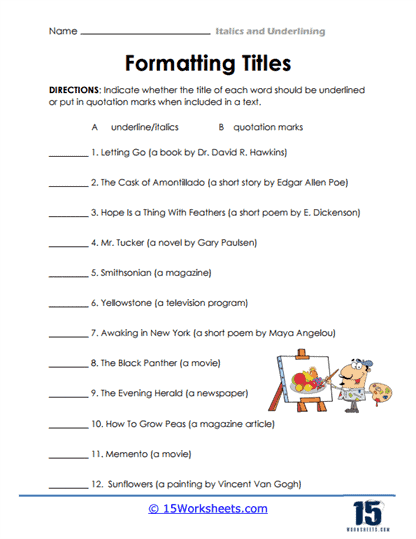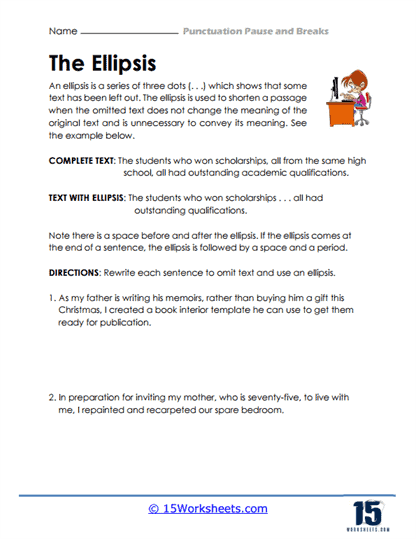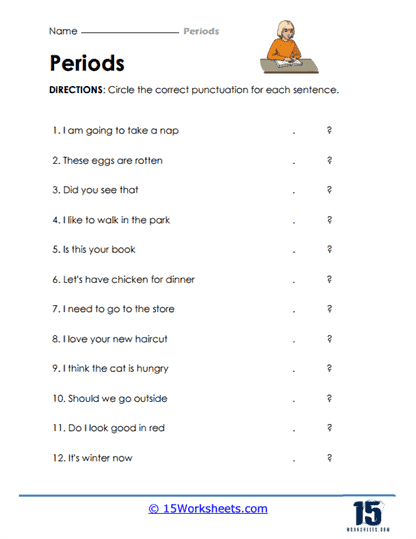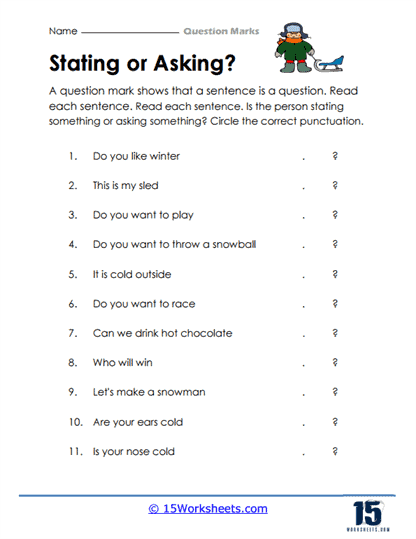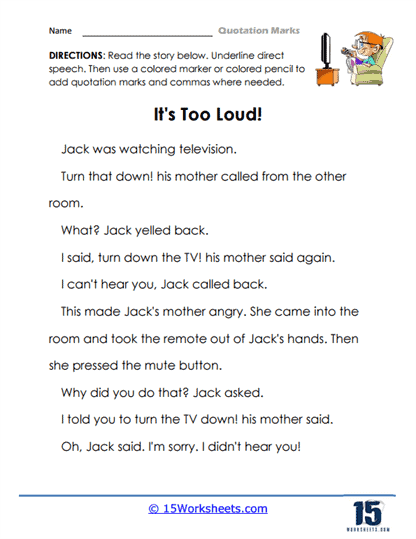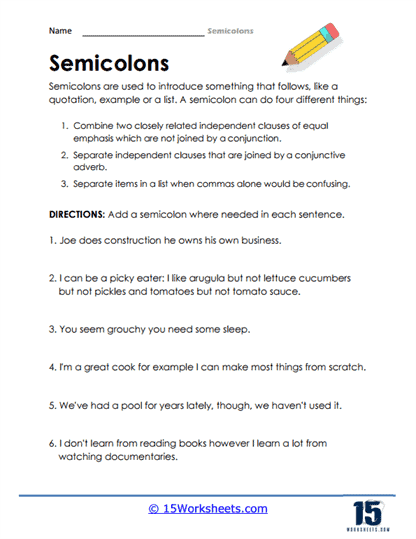Punctuation Worksheets
All About These 15 Worksheets
This series of 15 worksheets is an essential resource designed to help students develop a deep understanding of punctuation rules and enhance their writing skills with precision and clarity. These worksheets provide comprehensive lessons and engaging exercises that focus on mastering the art of punctuation, ensuring students communicate effectively and confidently in their written work.
The exercises take students on a step-by-step journey through the world of punctuation. From basic punctuation marks to more advanced usage, these worksheets cover a wide range of punctuation rules and their applications in different writing contexts. Through these worksheets, students will:
- Use pictures as visual clues to write phrases that show possession using apostrophes;
- Grasp the rules of capitalization;
- Understand when colons should be used and add them as necessary to sentences;
- Rewrite a dialogue in sentences, showing correct usage of quotation marks and proper capitalization;
- Identify how dashes are used differently in sentences;
- Learn how to use the ellipsis, periods, exclamation marks, question marks, italics, semicolons, and hyphens correctly;
- Use punctuation marks to signal pauses, indicate quotations, set off introductory and parenthetical elements, and create smooth transitions between ideas;
- And gain proficiency in using punctuation marks to enhance their writing style and convey precise meaning.
This series is suitable for students of different grade levels and can be integrated into language arts classes, writing workshops, or individual study sessions. By using these worksheets, teachers provide their students with the tools to express themselves clearly and confidently in their writing, leaving a positive impression on readers.
Through the exercises, students develop critical writing skills, attention to detail, and an understanding of the nuances of punctuation. In summary, they empower students to master punctuation rules, use punctuation marks effectively, and elevate the quality and professionalism of their written work.
What is the Purpose of Punctuation?
Punctuation marks help to make the meaning of sentences clear. They indicate the organization of the text, help to structure sentences, and separate or link words, phrases, and clauses. Without punctuation, written language can be difficult to understand. For example, the sentence “Let’s eat grandpa” without punctuation can be misunderstood, while “Let’s eat, grandpa” correctly uses a comma to avoid confusion.
Indicates Emotion Through Pauses and Intonation
Some punctuation marks can be used to indicate the emotional tone of a sentence. For instance, exclamation marks can express surprise, excitement, or command. Ellipses (…) can be used to indicate suspense, hesitation, or trailing off.
In spoken language, we use pauses, intonation, and emphasis to convey our meaning. Punctuation marks serve a similar purpose in written language. For example, periods indicate a full stop or pause at the end of a sentence, commas indicate a smaller pause within a sentence, and question marks indicate that the sentence has an interrogative intonation.
Indicates Direct Dialogue and Abbreviation
Punctuation helps to indicate dialogue and direct speech in a text. Quotation marks show when someone is speaking, while other punctuation marks like commas, periods, question marks, and exclamation marks show how they are speaking. Some punctuation marks are used in abbreviations. For example, periods are used in abbreviations like “U.S.” for United States. The apostrophe is used to indicate possession, as in “John’s book.”
What are the Different Forms of Punctuation?
Punctuation marks are symbols used in writing to provide clarity, indicate pauses, and organize sentences and ideas. Here are some of the most common forms of punctuation:
1. Period (.) – Indicates the end of a declarative sentence or a mild command.
2. Comma (,) – Used to separate items in a list, indicate a pause in a sentence, set off introductory elements, or separate independent clauses when joined by coordinating conjunctions.
3. Semicolon (;) – Separates independent clauses that are closely related in meaning but not joined by a coordinating conjunction, and can also be used to separate items in a list when those items contain commas.
4. Colon (:) – Used to introduce a list, a quotation, an explanation, or an example. It can also be used to separate hours and minutes when writing time.
5. Question mark (?) – Indicates the end of a direct question.
6. Exclamation mark (!) – Expresses strong emotion or emphasis at the end of a sentence or interjection.
7. Apostrophe (‘) – Used to show possession, create contractions, and sometimes form plurals of lowercase letters or numbers.
8. Quotation marks (” ” or ‘ ‘) – Surround direct quotations, indicate irony or sarcasm, or denote the titles of short works such as articles, essays, or poems.
9. Parentheses ( ) – Enclose non-essential information or clarifications within a sentence.
10. Brackets [ ] – Used to enclose editorial comments, corrections, or explanations within a quoted text.
11. Ellipsis (…) – Indicates the omission of words, phrases, or sentences from a text or the trailing off of a thought.
12. Hyphen (-) – Joins compound words or separates syllables in a single word when breaking it at the end of a line.
13. En dash (–) – Represents a range of values, such as dates, times, or numbers, and can also show a connection between two words.
14. Em dash (—) – Sets off a parenthetical element, introduces an explanation or amplification, or indicates a sudden break in thought.
15. Slash (/) – Separates alternatives, fractions, or lines of poetry when quoted in prose.
These are the most common punctuation marks used in English writing. Proper use of punctuation helps ensure clarity, readability, and accurate expression of ideas in written communication.

